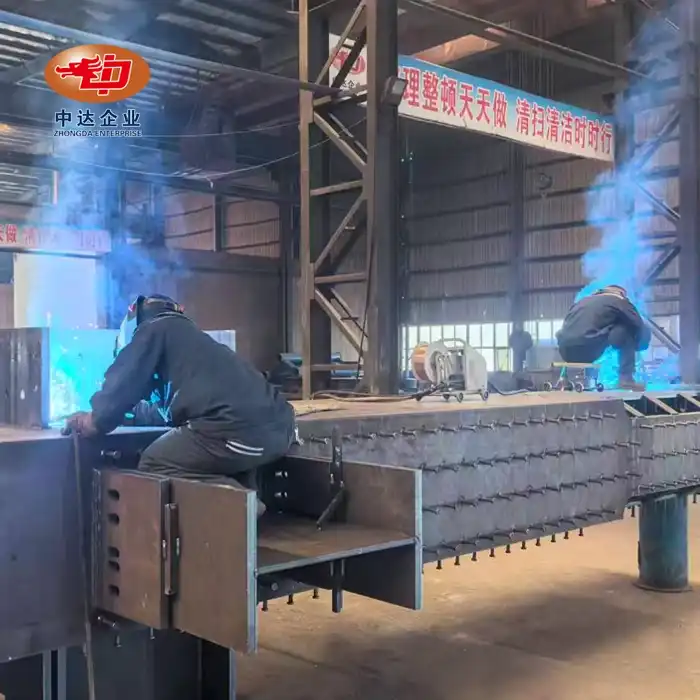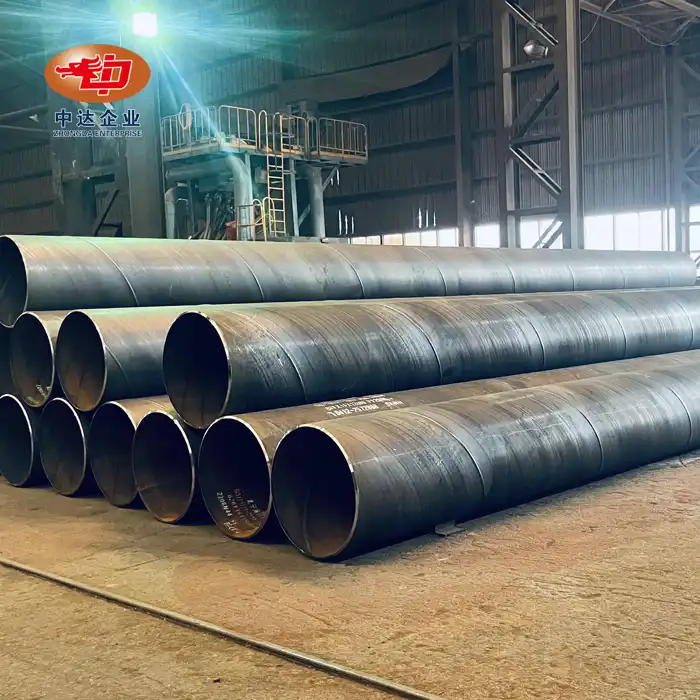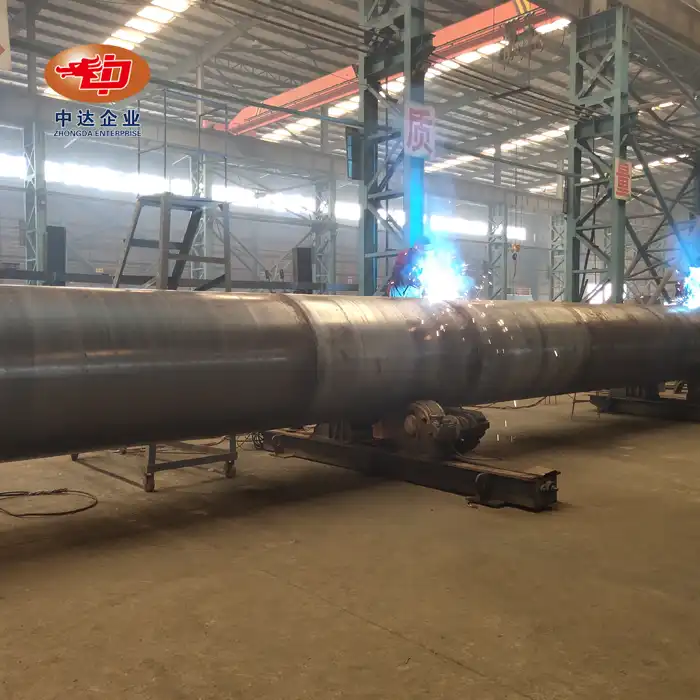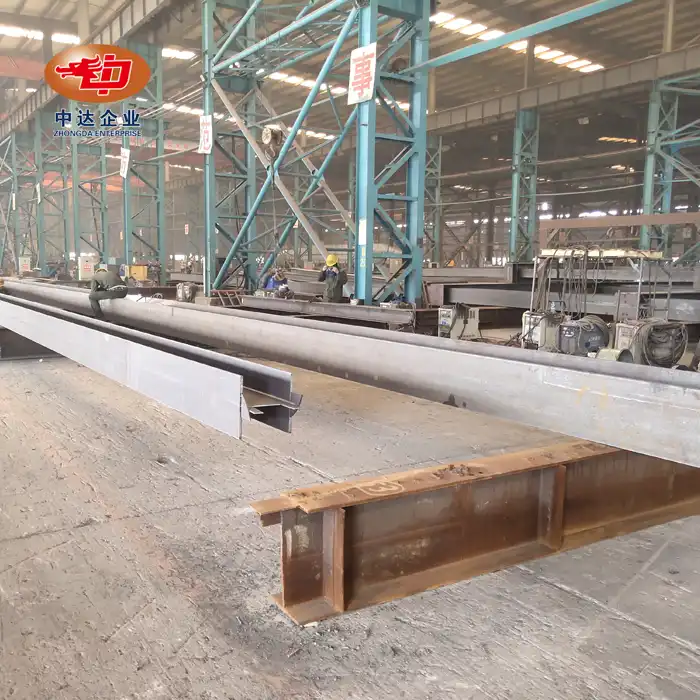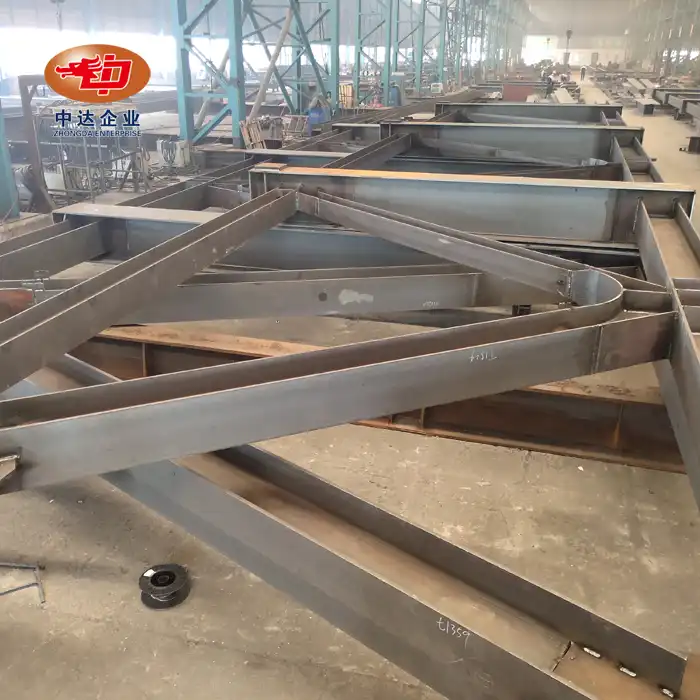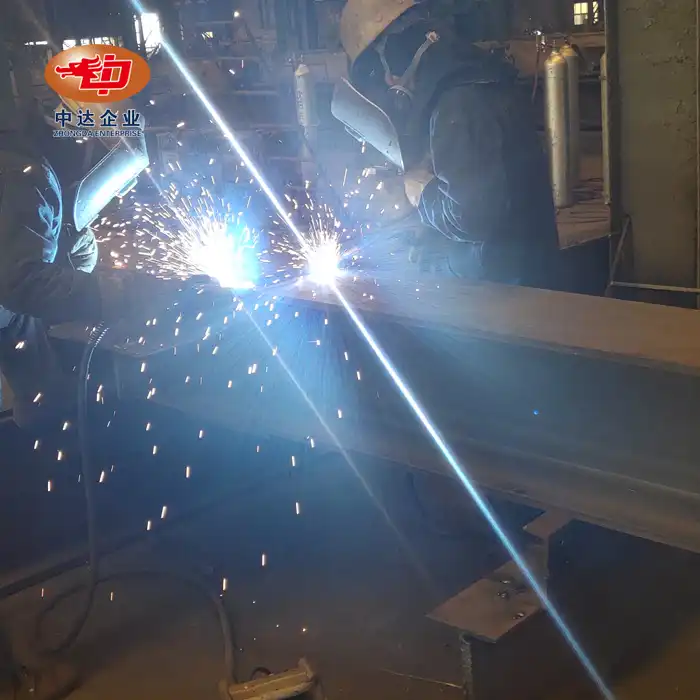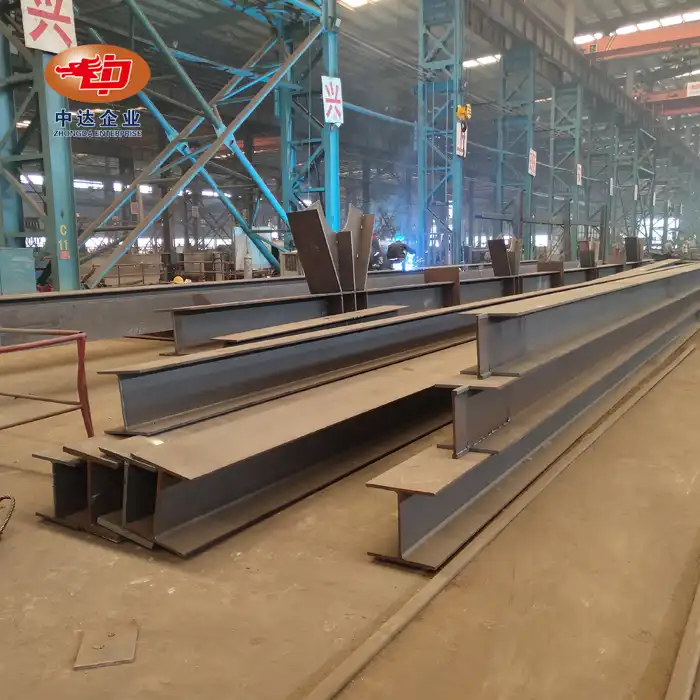Benefits of Steel Frame Systems for Logistics Warehouses
Structural Integrity and Durability
Steel frame systems boast exceptional strength-to-weight ratios, making them ideal for supporting heavy loads and withstanding extreme weather conditions. The inherent durability of steel ensures that your logistics warehouse will maintain its structural integrity for decades, reducing maintenance costs and enhancing long-term value. Moreover, steel's fire-resistant properties provide an additional layer of safety for your valuable inventory and personnel.
Flexibility and Customization
One of the key advantages of steel frame systems is their versatility in design. These structures, including space frame configurations, can be easily customized to accommodate various layout configurations, mezzanine levels, and specialized storage solutions. The ability to create large, open spaces without the need for intermediate supports allows for maximum utilization of floor area and efficient material handling. This flexibility also facilitates future expansions or modifications as your business needs evolve.
Rapid Construction and Cost-Efficiency
Steel frame systems significantly reduce construction timelines compared to traditional building methods. The use of prefabricated components, such as those offered by industry leaders like Zhongda Steel, allows for swift on-site assembly, minimizing disruptions to your business operations. This accelerated construction process not only saves time but also translates to substantial cost savings in terms of labor and project management expenses.

Key Considerations for Designing a 2-Story Logistics Warehouse
Optimizing Space Utilization
When designing a two-story logistics warehouse, it's crucial to maximize every square foot of available space. Implement vertical storage solutions, such as high-bay racking systems, to take full advantage of the building's height. Consider incorporating mezzanine floors for office spaces, packaging areas, or additional storage, effectively doubling your usable floor area without increasing the building's footprint.
Efficient Material Flow and Handling
Plan your warehouse layout to optimize the flow of goods and minimize unnecessary movement. Strategically position loading docks, conveyor systems, and vertical transportation equipment within the space frame structure to ensure seamless operations between floors. Implement advanced warehouse management systems to track inventory and streamline picking processes, enhancing overall efficiency and reducing operational costs.
Energy Efficiency and Sustainability
Incorporate energy-efficient features into your warehouse design to reduce long-term operational costs and minimize environmental impact. Utilize natural lighting through strategically placed skylights and windows, supplemented by energy-efficient LED lighting systems. Consider integrating renewable energy sources, such as solar panels on the roof, to offset electricity consumption. Proper insulation and climate control systems will help maintain optimal conditions for inventory storage while minimizing energy waste.
The Construction Process: From Design to Completion
Pre-Construction Planning and Engineering
The success of your two-story logistics warehouse project begins with meticulous planning and engineering. Collaborate with experienced structural engineers and architects to develop a comprehensive design that meets your specific requirements and complies with local building codes. Utilize advanced BIM (Building Information Modeling) technology to create detailed 3D models, enabling accurate visualization and identification of potential issues before construction begins.

Site Preparation and Foundation Work
Proper site preparation is crucial for ensuring the stability and longevity of your steel frame warehouse. Conduct thorough soil analysis and implement appropriate foundation solutions, such as deep piles or reinforced concrete slabs, to support the space frame structure's weight and resist potential settlement. Pay special attention to drainage systems and grading to prevent water accumulation and maintain a dry environment for your inventory.
Steel Frame Erection and Finishing
With the foundation in place, the steel frame erection process can begin. Skilled technicians will assemble the prefabricated components, ensuring precise alignment and secure connections. This phase typically progresses rapidly, with the basic structure taking shape in a matter of weeks. Once the frame is complete, the installation of roofing, wall cladding, and interior systems can commence. Throughout the construction process, adhere to strict quality control measures to guarantee the structural integrity and safety of your warehouse.
Conclusion
Building a two-story logistics warehouse using steel frame systems, including space frame designs, is a smart investment for businesses seeking to expand their storage capacity and streamline operations. By partnering with industry leaders like Zhongda Steel, you can leverage cutting-edge technology and expertise to create a state-of-the-art facility tailored to your specific needs. From the initial design phase to the final touches, every aspect of the construction process is optimized for efficiency, durability, and long-term value.
As you embark on your warehouse construction journey, remember that the key to success lies in careful planning, attention to detail, and collaboration with experienced professionals. By prioritizing space utilization, energy efficiency, and operational flow, you'll create a logistics powerhouse that drives your business forward for years to come.
Contact Us
Ready to transform your logistics operations with a cutting-edge steel frame warehouse? Contact Zhongda Steel today at Ava@zd-steels.com to explore how our innovative solutions and global expertise can bring your vision to life. With our ISO-certified quality, BIM-driven prefabrication, and commitment to excellence, we'll help you build a logistics facility that sets new standards in efficiency and performance. Don't just store your inventory - optimize your entire supply chain with Zhongda Steel's advanced warehouse solutions.
References
Johnson, R. (2022). Advanced Steel Frame Systems for Modern Logistics Warehouses. Journal of Industrial Architecture, 45(3), 78-92.
Smith, A., & Brown, T. (2021). Optimizing Space Utilization in Multi-Story Warehouses. Logistics Management Quarterly, 33(2), 112-126.
Chen, L., et al. (2023). Energy-Efficient Design Strategies for Large-Scale Distribution Centers. Sustainable Building Technology, 18(4), 203-217.
Williams, K. (2022). The Role of BIM in Streamlining Warehouse Construction Projects. Construction Technology Review, 29(1), 55-69.
Garcia, M., & Lee, S. (2021). Material Flow Optimization in Two-Story Logistics Facilities. International Journal of Supply Chain Management, 14(3), 180-195.
Thompson, E. (2023). Advancements in Prefabricated Steel Structures for Industrial Applications. Engineering Innovation Digest, 37(2), 142-156.











